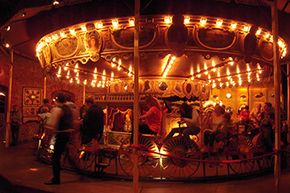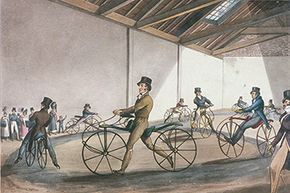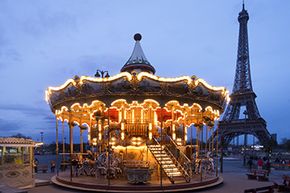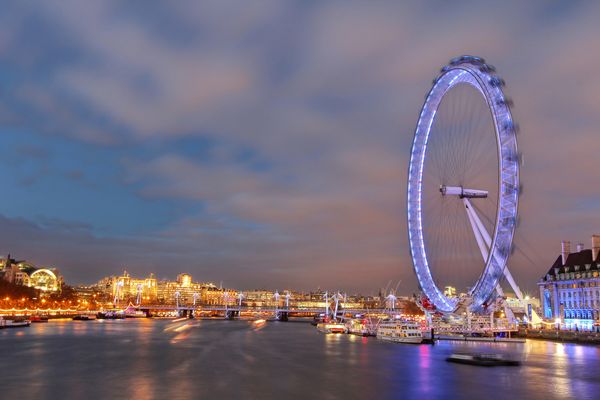One of the most beloved rides at any carnival or fair is the carousel, or merry-go-round. A menagerieof animals, often horses, is mounted on a circular platform. As the platform slowly turns around and around, each animal glides up and down a pole. A few of the animals may be stationary, for those who prefer it. The ride is safe, gentle and appeals to young and old alike. The velocipede carousel was slightly different.
Carousels trace their roots back to a game played by Arabian and Turkish horsemen in the 1100s. In the game, which Spanish crusaders brought back to Europe, men would race on horseback, lances in hand, trying to spear a tiny ring hanging from a tree limb. Fast-forward to the 18th century, when a Frenchman decided youth should be trained in ring-spearing. To help them out, he created a device where carved horses and chariots, hanging from chains, were hooked together from a center pole. From this device the modern carousel, or merry-go-round, evolved. A precise date for the first modern carousel isn't known, but they were relatively common in Europe by the late 18th century [source: International Museum of Carousel Art]. Initially carousels were powered by men or animals, then steam and finally electricity [source: Cohen].
Advertisement
In the late 19th century, the velocipede carousel debuted. This carousel moved by people-power: Each rider used bicycle-type pedals to collectively move the ride. As people pedaled in unison, the entire set of figures circled the platform. The pedals were set so that you had to pedal together, at the same speed, like riding a tandem bike. If you couldn't keep up, you could lift your feet up off the pedals and enjoy a ride compliments of your neighbors' sweat. Because a lot of young kids wouldn't be able to help pedal, velocipede carousels contained some raised, pedal-less seats.Some velocipede carousels were also built so they could be pedaled backward [source: Cohen].
Unfortunately, velocipede carousels were a short-lived phenomenon likely because people preferred the ease of mechanical power over their own muscle. By the early 20th century, they were largely gone.More interesting than their short longevity may be the impetus behind their creation.
Advertisement















